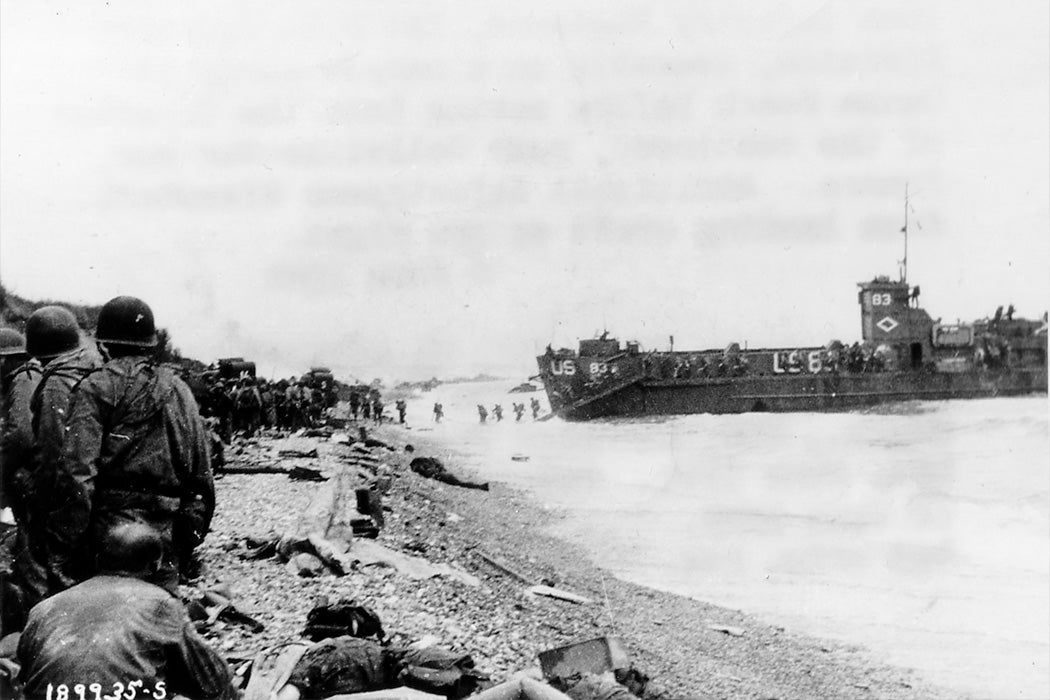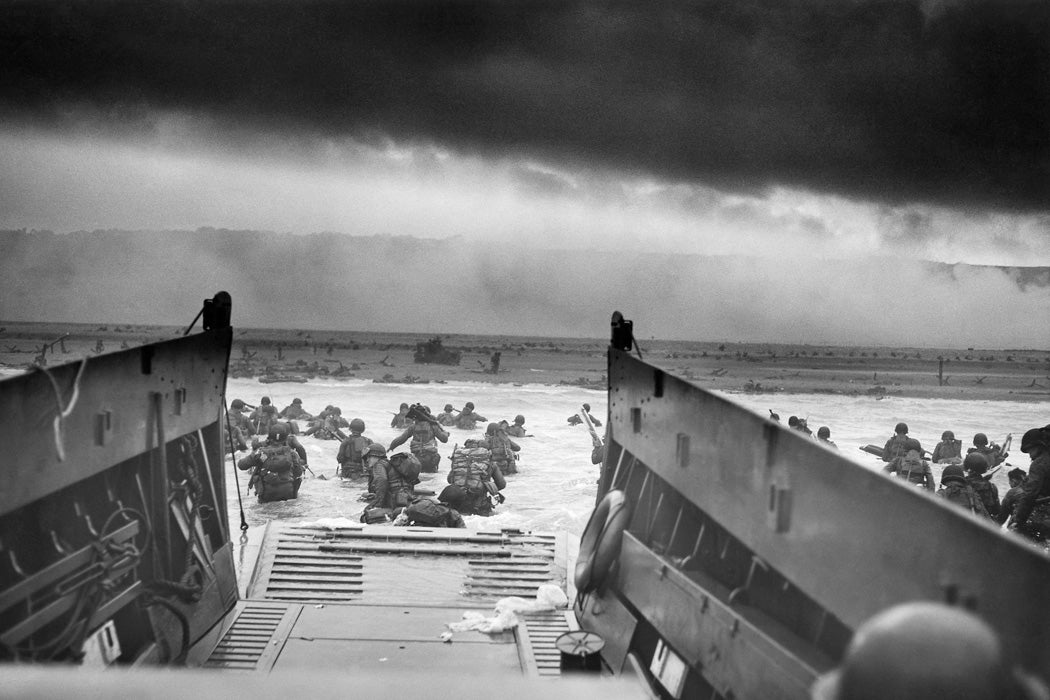On June 6th, 1944, Operation Overlord began on the Normandy coast. It was the beginning of the liberation of Nazi-occupied France. More than a dozen nations contributed soldiers, the great majority from America, Britain, and Canada. The ultimate goal was the defeat of Nazism.
Most Allied invasions and landings in World War II began with a “D-Day.” The D stood, in military redundancy, for “day”—the day-day of the invasion. But this D-Day was different, an unparalleled undertaking involving more than two million Allied personnel. Of course, those involved in Overlord couldn’t know if the invasion would be a success. It all came down to the weather, the tides, and the amount of moonlight. Low tide, small waves, and a moonlit night were essential.
As geographer Mildred Berman explains, weather forecasting was fairly rudimentary in those days. There were no satellites, telecommunications, or supercomputers. “One or two days of continuously overcast sky with low clouds could bring the entire undertaking to a halt,” she writes, quoting a general who said weather “would remain as constant an enemy as the Germans.”
Berman writes,
The success or failure of the grand design would be controlled by a combination of elements, not only the moon and its effect on the tides but also sea swells, breaking surf, beach surfaces, and visibility in the air and on the ground…All the desired conditions for tides occurred on only six days a month, but optimum conditions for tides and moonlight occurred on only three days a month, which in June 1944 were the 5th, 6th, and 7th.
Cancelling these dates would mean a delay of two weeks at least, something logistics, secrecy, and hundreds of thousands of troops in the south of England could hardly bear. June 5th was the initial choice, but the 4th saw December-like high winds, five-foot waves, and four-foot surf. Planning shifted to June 6th.

Berman recreates the frantic back-and-forth between weathermen and military brass. At 3:30 a.m. on June 5th, “winds were almost hurricane strength, rain was driving in horizontal sheets, and roads to Allied headquarters in Portsmouth were morasses of mud.” Meteorologists predicted that the next morning, however, would see a brief break in the miserable weather, aligning with the optimal moon and tides. So just after midnight, on June 6th, airplanes with 18,000 airborne troops started their motors.
Berman comments on the vital weather-data gap:
German meteorologists had failed to predict the break in the weather that prompted the Allied decision, because they simply did not have sufficient data. Due to high winds and heavy overcast on 5 June, German naval patrols were canceled, mine layers restricted to port, and the Luftwaffe was grounded.
Field Marshall Erwin Rommel thought an invasion so unlikely in the bad weather that he returned to Germany for his wife’s birthday… and to ask for more tanks for what he considered a woefully under-defended Atlantic coast.
In 2018, oceanographer John Vassie and engineer Byung Ho Choi ran a “hindcast simulation” using all the modern tools of weather forecasting and “coupled tide-wave-storm surge physics” to see how good the original forecast was. They found “the tidal prediction at invasion at Omaha Beach [one of the five targeted beaches] was reasonably accurate.”
Weekly Digest
Back in 1944, however, German commanders were convinced the Normandy landings were actually a diversion for a main assault at Pas de Calais, the narrowest part of the Channel. They should have been solving the Daily Telegraph’s crossword puzzle, which in the weeks prior to D-Day had answers that were the codewords for the operation.
The Allies suffered at least 10,000 casualties during the initial landings. There would be many more before Germany’s unconditional surrender in May of 1945.







